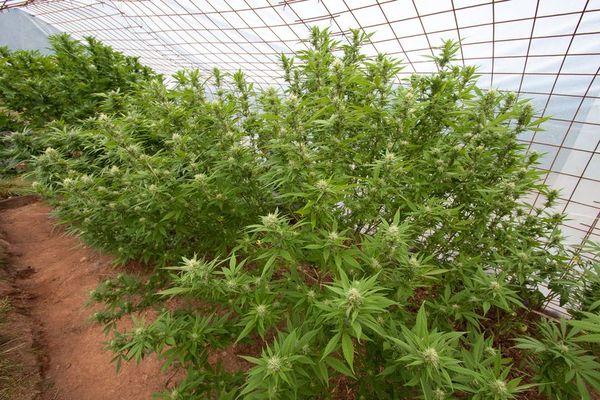- The stress experienced by cannabis plants is a factor that quite often novice growers don’t take into account. However, it can negatively affect the outcome of their crops.
- A stressed marijuana plant will stop or slow down its growth and production and, in some cases, it can even mean the difference between an abundant storeroom full of buds and a rather poor and low-quality result.
- In this post, we will explain to you how to prevent your marijuana plants from suffering negative stress and, if it is too late for it, how to minimize the damage it causes and try to reverse the situation.

Stress does not always imply negative consequences; just like certain stressful moments can be a stimulant to produce positive reactions in humans, in plants, certain situations of stress can help them get stronger and better adapt to the environment. However, we all know the negative effects of prolonged or too intense stress situations on our health−like being under a lot of pressure at work, suffering from post-traumatic stress after a car accident, etc. The same thing happens in the plant kingdom; when plants are subjected to situations in which stress is too intense, their development will be affected and therefore their growth and flowering.
In indoor cultivation it is easier to control the elements that can be stressful for cannabis plants, but outdoors sometimes things get complicated. Since the outdoor season is just around the corner, let us give you some keys to prevent stress. Go for it!
NEGATIVE STRESS FACTORS THAT MAY AFFECT YOUR CANNABIS PLANTS OUTDOOR
Water stress:
Generated by overwatering and underwatering. The lack of water in outdoor cultivation is very common during the hottest summer months (July-August), and may affect the metabolic development of the plant. The soil dries and the plant looks depressed, its leaves bent down. The excess of water is typical of the spring months or at end of the crop (September-October) when rain is more frequent.
Solution
Do not neglect your cultivation; check your cannabis plants daily (if possible) to see if they are getting the water they need. If it rains, place your plants under cover to avoid the substrate from becoming soaked.
Stress by hypoxia:
It occurs when the roots don't receive enough oxygen. This usually happens with substrates that remain wet longer than they should or have poor drainage. The lack of oxygen causes the plant to slow down its metabolic functions and in some cases to even stop its growth. Its leaves typically become yellowish green.
Solution
Create an aerated and fluffy substrate, especially if the strains you are going to plant in your garden are autoflowering ones. You can make a soil mixture with 30% coconut to get a more aerated medium. Make sure the pot is well drained. Remember that from 20 degrees of temperature on, the oxygen dissolved in the water decreases, so avoid leaving the watering can with the water that you will be using standing for hours in the sun.
Stress due to inadequate temperature:
Either by too much heat or too much cold, cannabis plants suffer stress during very cold nights or very hot days. Marihuana plants have a great capacity for adaptation and they can properly develop in different climates, as long as the temperature parameters remain at what we consider suitable for cannabis, that is, from 18 to 29 degrees centigrade.
Solution
Below five degrees, cannabis plant stops growing. This happens especially when they are seedlings and are in their first phase of life, coinciding with the spring months in which nights are usually chillier. If you see that at night time temperatures drop too much, try covering your plants so that they are not so exposed to the cold. If they are exposed to too high temperatures, you can use shading meshes, which can reduce the temperature up to seven degrees.
Stress caused by pests / diseases:
When a plant is infected with an illness or is attacked by an insect (something very common in outdoor cultivation), it spends all its energy in defending itself against the pest and recover from the damaged caused. This usually prevents it from growing.
Solution
There is no magic solution, apply prevention methods to minimise the chances of your plants being attacked. If it happens, try to solve the problem as soon as possible and treat it carefully since it will weaken the plant if you don't. Apply a gentle fertiliser with vitamins and amino acids. We recommend being very attentive and regularly checking symptoms of a pest in your plants. If you want to know more about how to detect threats to your cannabis plants click here.
Stress by excess or lack of nutrients:
Lack of nutrients is normally not due to lack of fertiliser. Often the problem is that the plants cannot absorb them. One of the most common reasons is the accumulation of salts in the substrate, which causes the tips of the roots to burn and results in an insufficient absorption of nutrients.
Solution
Make a root wash with plenty of water without fertiliser to clean the salts in the substrate. Check the EC of the nutrient solution with which you are watering your plants, if the electroconductivity levels exceed 0.8, the water you are using is not good for your crop and you must use a reverse osmosis machine to clean the water before watering.
Stress by PH:
To develop properly, cannabis plants need the PH level in their environment to oscillate between 5,9 and 6,5. If you leave these margins, it can cause problems in the absorption of nutrients and affect the growth and flowering of the plant.
Solution
Be sure to measure the pH of the nutrient solution before watering. If it is not correct, adjust it.
Stress caused by damaged tissue:
Any tissue breakage, loss of branches or leaves and damage to the trunk will be a source of stress for the plant. It is quite common for your outdoors cannabis plants to be exposed to these types of accidents (wind, animals, etc.).
Solution
To avoid any mishap, you can protect your plants with some kind of mesh, especially in their first stage of life, when they are the most vulnerable.



Comments from our readers
Read comments in other languages:
Did you like this post?
Your opinion about our seeds is very important to us and can help other users a lot (your email address won't be made public).